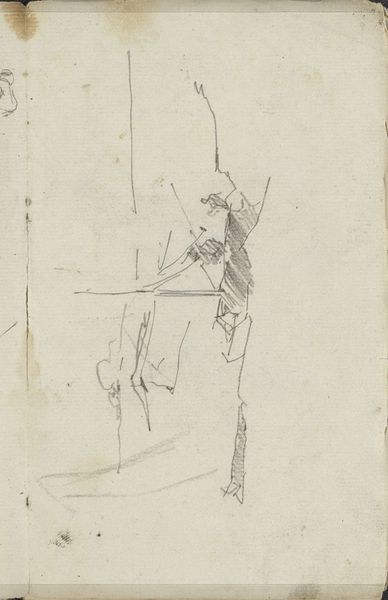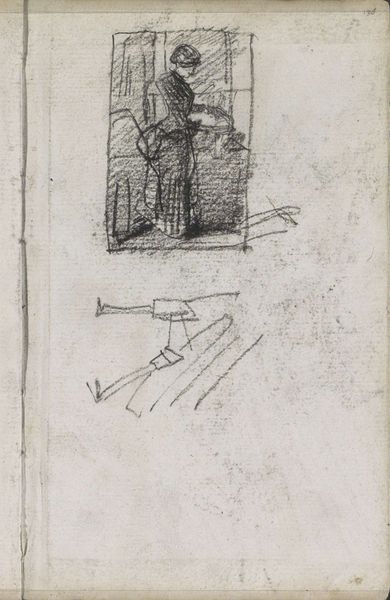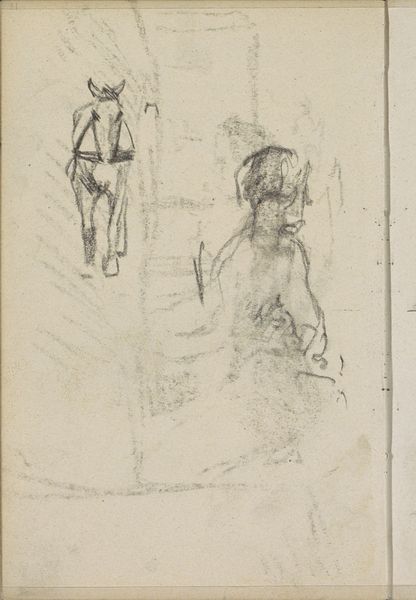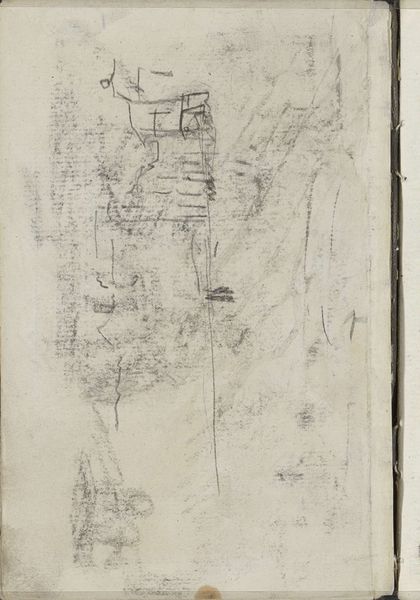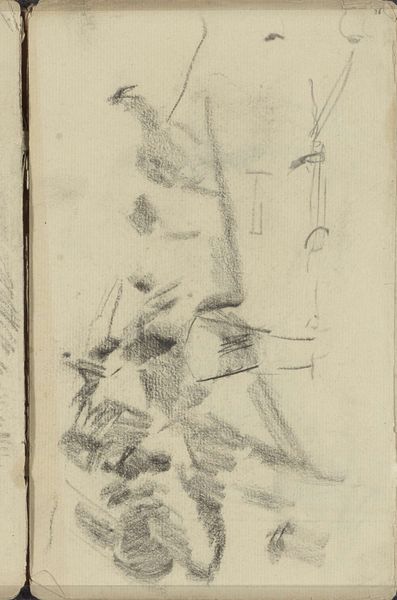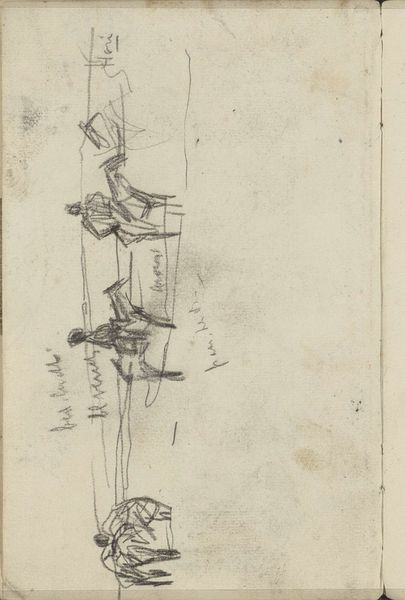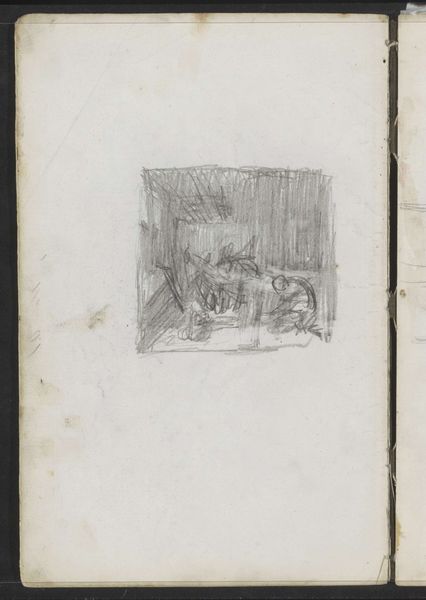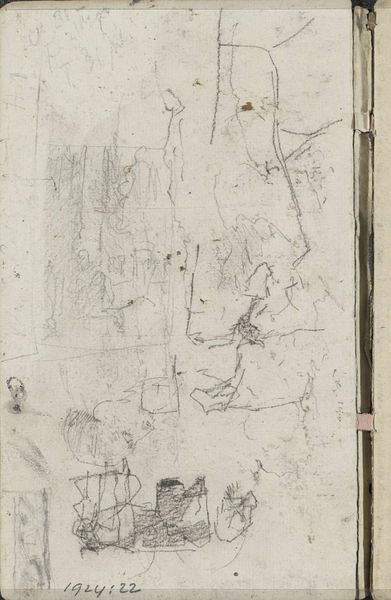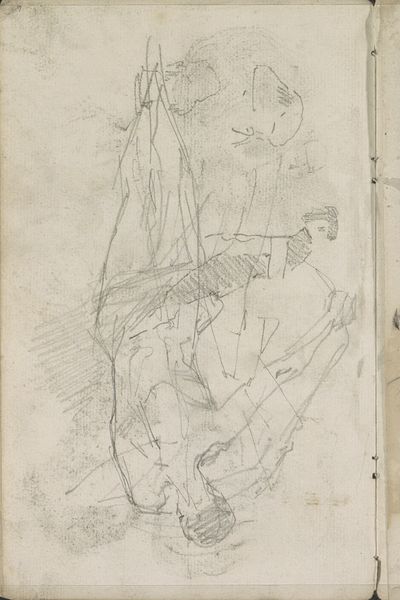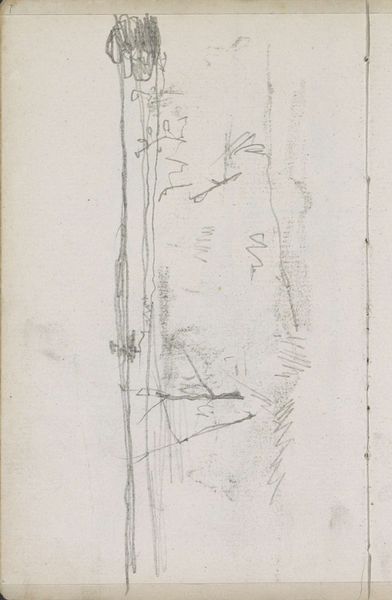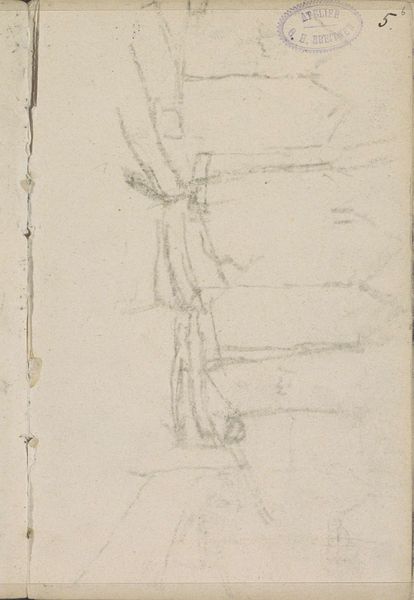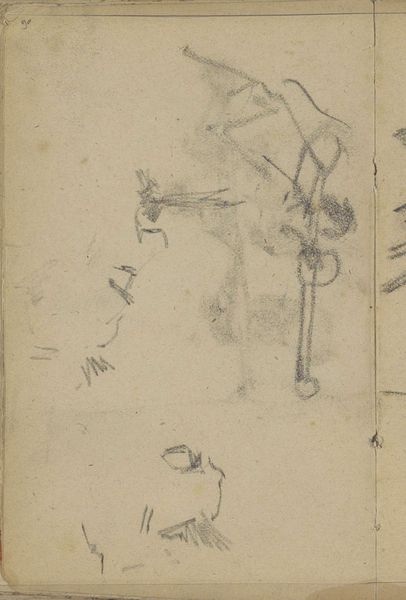
Copyright: Rijks Museum: Open Domain
Curator: This work, titled "Annotatie," by George Hendrik Breitner, dates from 1893 to 1894. It’s currently held here at the Rijksmuseum and was executed in pencil and colored pencil on paper. Editor: My first impression is one of fragmented narrative. It feels like catching a glimpse of something partially erased, or perhaps not yet fully formed. The ghostly figures and sparse lines evoke a sense of transience. Curator: That’s a very perceptive reading. Breitner was indeed capturing fleeting moments of urban life. While “Annotatie” translates to "annotation," in English, which suggests the artist's notes on the street views, and records not only physical presences but perhaps memories of events. What might those figures symbolize to a city in that period? Editor: Absolutely. Given the period, rife with social stratification and urban development, the figures could represent marginalized individuals, swallowed by the burgeoning cityscape. There is a ghostly quality to the figures, and a deliberate sense of urban alienation and the effects of modernization, making the undercurrent both political and humanist. Curator: Interesting. For me, the fragmented quality also speaks to the Impressionistic focus on capturing sensory impressions. It feels raw and spontaneous, almost like a visual diary entry. Look how minimal but precise the figures are: do they suggest anonymity? Breitner may have intentionally omitted details to reflect the universal experience of city life. Editor: True, but consider the potential for a subtle critique. The elusiveness of the figures could reflect the erasure of particular histories and bodies within a rapidly transforming social landscape. Which invites questions about visibility, power, and representation within the public sphere. Curator: It's fascinating how the limited palette intensifies the emotion. The gray evokes a melancholic tone, as if mourning for something lost within that era. Perhaps the pencil sketches of faces signify all these possible stories together? Editor: I agree, there is an element of elegy here, in service of a deeper, urgent question: Who bears witness to the shadows? Curator: Indeed, and those questions continue to resonate, here in the present. It prompts reflection on those unseen today as cities evolve, in this urban landscape that continues to exist around us. Editor: Thank you. Viewing the world around us, both today and as recorded from yesterday, and its people, in turn, becomes a moral exercise and civic act.
Comments
No comments
Be the first to comment and join the conversation on the ultimate creative platform.
